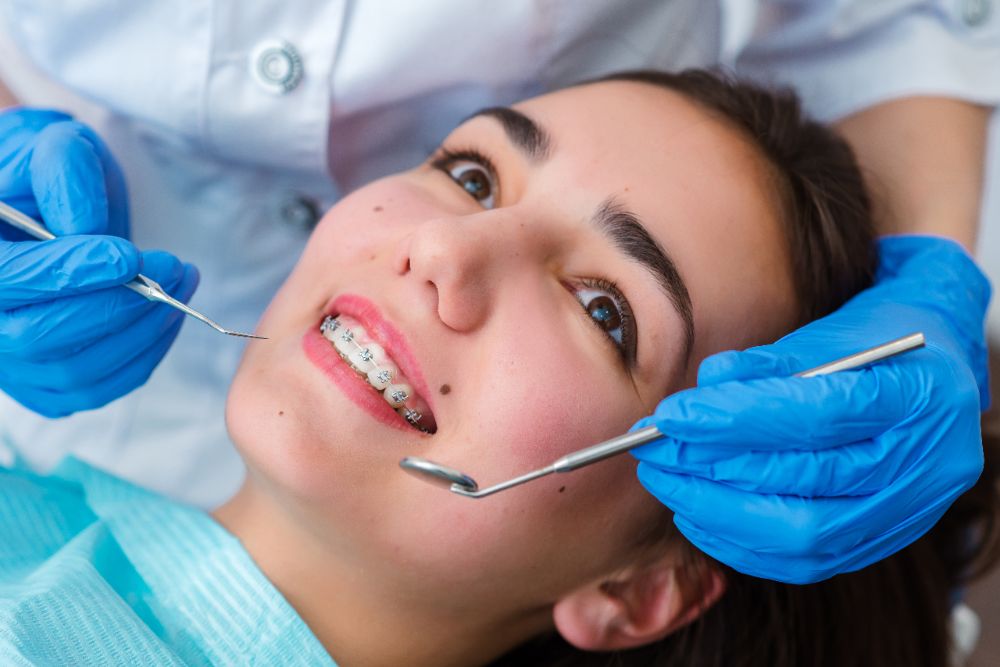Comprehensive Guide to Orthodontics Procedures for Correcting Dental Misalignments
Comprehending the ins and outs of each treatment, including their devices, advantages, and possible downsides, is critical in making educated decisions about one's orthodontic treatment. As we browse with the extensive guide to orthodontic treatments for remedying dental imbalances, the elaborate details of each method will certainly unfold, shedding light on the course towards a useful and harmonious oral positioning.
Orthodontic Procedures Summary

Along with typical dental braces and clear aligners, orthodontists may additionally recommend other treatments like headwear, palatal expanders, or retainers to address certain alignment problems (aligners). These treatments are customized per client's one-of-a-kind needs and may include a mix of therapies to accomplish the wanted results. Regular modifications and monitoring are important parts of orthodontic therapy to make certain development is on track and to make any necessary adjustments along the way. By going through orthodontic treatments, individuals can not just attain a straighter smile however also improve their overall dental health and wellness and function.
Traditional Braces: How They Function
When considering orthodontic treatments for dental imbalances, conventional braces stick out as a reliable technique for fixing teeth placing. Conventional dental braces are composed of brackets, cables, and bands that interact to use continuous pressure on the teeth, gradually moving them right into the desired placement. The brackets are affixed to the teeth making use of a special adhesive, and the cables are threaded with the braces. By adjusting the stress of the cords, orthodontists can control the direction and pressure related to each tooth, assisting them right into appropriate placement over time.
As stress is used to the teeth with the braces, the bone surrounding the teeth is reshaped to support the brand-new tooth positions. Patients will require regular adjustments at the orthodontist's office to make sure the dental braces continue to apply the correct stress for reliable teeth activity.
Unnoticeable Aligners: Cons and pros
These clear, personalized trays are essentially unnoticeable when put on, making them an attractive alternative for individuals looking for a more cosmetically pleasing orthodontic treatment. People can remove the aligners prior to eating or cleaning their teeth, reducing the danger of food getting stuck in the home appliance and streamlining the cleaning procedure.

Surgical Orthodontic Options
Surgical treatments in orthodontics existing sensible alternatives for resolving intricate oral imbalances that might not be properly settled pop over to this web-site via standard orthodontic treatments. While conventional braces and invisible aligners can deal with several orthodontic concerns, specific cases require medical treatment to attain optimum results. Surgical orthodontic options are typically advised for serious malocclusions, considerable jaw discrepancies, and cases where the underlying bone framework requires modification to attain correct positioning.
One common medical orthodontic procedure is orthognathic surgery, which entails repositioning the jaws to correct useful problems such as difficulty talking or chewing. This surgical procedure is commonly carried out in cooperation with an orthodontist who helps align the teeth before and after the treatment. Surgical orthodontics may likewise involve treatments to expose influenced teeth, remove excess gum cells, or reshape the jawbone to develop a much more unified facial account.
Before considering medical orthodontic options, individuals undergo a thorough examination to determine the requirement and possible benefits of such interventions. cumming aligners. While surgical treatment might seem complicated, it can significantly enhance both the feature and looks of the smile in cases where over here traditional orthodontic treatments drop short
Retainers and Post-Treatment Treatment

Post-treatment care includes following the orthodontist's directions faithfully. This might include proper oral hygiene practices, going to follow-up visits, and using the retainers as suggested. Failing to abide with post-treatment treatment instructions can result in relapse, where the teeth gradually move back in the direction of their initial settings. Constant retainer wear, great dental hygiene, and routine dental check-ups are vital for preserving the outcomes accomplished with orthodontic surgical treatment and making sure the long-lasting stability of the fixed dental positioning.
Verdict
Finally, orthodontic treatments use various alternatives for dealing with dental misalignments. Typical braces use steel brackets and cables to shift teeth right into proper placement. Undetectable aligners offer a more very discreet alternative yet might not appropriate for all instances. Surgical orthodontic choices are readily available for a lot more severe imbalances. Retainers are typically made use of post-treatment to maintain the brand-new positioning. On the whole, orthodontic procedures can properly enhance oral health and visual look.
As we navigate via the thorough overview to orthodontic procedures for remedying oral imbalances, the intricate information of each method will unravel, shedding light on the path towards a unified and useful dental alignment. - orthodontics
One of the most usual orthodontic treatments is the usage of braces, which are composed of steel braces and cables that apply gentle pressure to progressively shift teeth right into the preferred placement.When taking into consideration orthodontic therapies for dental imbalances, conventional dental braces stand out as a tried and true technique for dealing with teeth placing. In addition, unseen aligners might not be ideal for complicated orthodontic concerns that need even more substantial teeth motion, as they are usually recommended for light to modest cases. Retainers are tailor-made orthodontic devices made to hold teeth in their dealt with placements after the completion of orthodontic therapy.